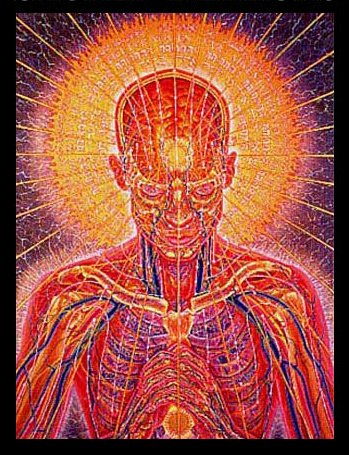




|
ENERGY
|
GAIN ENERGY
APPRENTICE
LEVEL1
|
THE
ENERGY BLOCKAGE REMOVAL
PROCESS
|
THE
KARMA CLEARING
PROCESS
APPRENTICE
LEVEL3
|
MASTERY
OF RELATIONSHIPS
TANTRA
APPRENTICE
LEVEL4
|
2005 AND 2006
|
THE MASK OF SANITYSection 4: Some questions still without adequate answersPart 2: What is wrong with these patients?66. Illness and misconduct
|
66. Illness and misconduct A good deal has already been said about the difficulties and disappointments arising in our efforts to treat these patients generally known as psychopaths. A few more points will be added presently to the opinions already expressed, but if we are to make any progress therapeutically it seems first necessary to clarify some broader issues. Aside from the intrinsic obdurateness of the disorder which we find in the patient himself, there exist surrounding difficulties and absurdities that have made it quite impossible even to approach the central problem in any way except one that axiomatically predetermines defeat. Challenged by what is perhaps the most difficult therapeutic task in psychiatry, the physician is denied ordinary access to the area in which the task must be accomplished. It is only in exceptional instances that the therapist can get his hands on the patient, and even then he has little more opportunity to take useful measures than would a surgeon called upon to remove the gallbladder of a jackrabbit in full flight. Our medical, legal, and social concepts are so formulated and our institutions so devised that it is usually impossible to bring the psychopath into the range of treatment. Nor is it usually possible for him to be brought under the control of any agency that can protect him or others from the damaging effects of his disorder.48-50 This point is emphasized by Thompson in a helpful study:278 The administrative officers of penal institutions attempt to have such individuals transferred to mental hospitals because they believe them to be mentally ill. Knowing how little they can do for them and what difficult problems they are, the superintendents of mental hospitals attempt to get rid of them as soon as possible and transfer them back to the prison as "not psychotic." Passed from prison to hospital and back again, wanted in neither, the psychopathic delinquent is essentially the orphan of both penology and psychiatry. SOME QUESTIONS STILL WITHOUT ADEQUATE ANSWERS 417 Many observers have apparently been impressed by the remarkable facility people of this sort show in avoiding the control of prolonged confinement in prisons or hospitals and in evading other usual and expected penalties for persistent illegal conduct. Hare in 1970 makes this cornment:116 The hedonistic and self-centered acts of many psychopaths often go relatively unpunished. Studies by Robins (1966) and Gibbens, Briscoe, and Dell (1968) have shown that a surprisingly large number of psychopathic persons somehow manage to avoid incarceration in spite of the fact that their behavior may be grossly antisocial. In many cases they are protected by family and friends who may themselves be their victims. In other cases they may be charming and intelligent enough to talk their way out of prosecution. In any event, their behavior may be relatively unchecked and unpunished; and therefore very rewarding, persistent, and firmly established. [pp. 111-112] The exceptional patients who commit very serious felonies and are convicted sometimes, it is true, come and may remain under the legal restraints of prison. Like the patient with traditionally recognized psychosis, the psychopath cannot be counted on to seek treatment and even less to submit voluntarily to protective measures. Two crucial points confront us in any attempt to deal practically with the disorder which has engaged our attention: (1) the question of distinguishing between illness (true disability) and willful or culpable misbehavior and (2) the question of legal responsibility or competency. These two matters are deeply interwoven and bring us eventually to the same basic problem. It will be helpful, however, to approach that problem through these two channels. Let us take them in order. It has already been pointed out that in earlier times many types of dangerous or bizarre conduct which today are regarded as illness were attributed to witchcraft, demon possession, or other supernatural agencies.210,275,300,801 Along with and subsequent to this interpretation we find the practice of attributing misfortune, and ordinary physical and psychiatric diseases to sin or some other form of voluntary wrongdoing. Those conditions earliest recognized as having a medical aspect are the ones in which injury, symptoms (somatic or psychic), and other outward features are most obvious. The overtness rather than the real degree of seriousness seems to have been the chief clue in these determinations. The medical practitioner was called upon to help with the mangled leg or the carbuncle while exorcism and other mystic rites were still the only measures provided for the patient suffering from such obscure pathology as leukemia or Addison's disease. Even when ideas still prevailed that wrongdoing was the primary cause of disease, treatment by the physician was accepted as an appropriate step 418 THE MASK OF SANITY to take in dealing with some of these afflictions.51,300 The compound fracture that followed a fall was treated by the surgeon during times when the fall was regarded as the result of a sorcerer's spell. So, too, salvarsan was administered to the patient with syphilis even by those who regarded him as ill primarily because of his voluntary wrongdoing. After overt and vividly macroscopic expressions of psychosis (running naked through the streets and wildly shouting out messages received from the dead, arguing that one's body lacks an anus or one's blood is pure pus) had for some time been accepted as illness, decades passed before the patient with masked or cryptic schizophrenia and the well-oriented, careful, and brilliantly reasoning paranoiac could count on so regular or so early medical attention as they receive today. We have not yet learned to distinguish such patients very readily and they sometimes remain without treatment or any protective social measures until their disorder is far advanced. Murder or some other tragic consequence may be necessary to bring them to examination and eventually to what treatment is available for their condition. Forms of expressions of illness are not necessarily less serious, less dangerous, or less genuine because the superficial appearance of the patient reveals less obvious signs of a disorder. One of the factors contributing to our present difficulty in distinguishing the aspect of illness in the psychopath is, I believe, not dependent on the degree of whatever disorder he shows but on its type or nature. Few (sane) theologians, philosophers, or jurists would contend today that present concepts of disease and methods of dealing with it, whether manifested in a predominantly somatic aspect or otherwise, have damaged religion or made nonsense of moral values. When something can be done to help the situation in its medical aspect, this is done without waiting to reach agreement on nonmedical absolutes, however important these ultimate questions may be for each of us. The patient with pneumonia might not have become ill if he had not suffered exposure while he was out in severe weather robbing the bank. Another patient's hemorrhoids may or may not be related to his lazy habits of sitting around all day or to his becoming constipated and then unwisely taking powerful laxatives advertised in the papers. Here we may find a patient whose anxiety seems to be, in part at least, caused by a (cowardly) fear of accepting the responsibilities (and opportunities) of a new job and also by an old pathologic (wrong) tendency to rely on his mother for support and protection. A man in severe agitated depression may say all his viscera have rotted until the stench is lethal and that his neighbor's crops wither under his SOME QUESTIONS STILL WITHOUT ADEQUATE ANSWERS 419 glance. His throat may show deep lacerations from his last desperate attempt at suicide. No one questions the plain fact that he is ill and gravely ill. Some psychopathologists believe that he is ill primarily (or largely) because of his unconscious hate for those he loves and his impulses to destroy them.2,3,79 Even those who hold this belief agree that therapy is appropriate. It is also agreed that he must be supervised and protected, if necessary against his own will and judgment. Just who or what (in a final philosophic showdown) is to blame for these situations is difficult indeed for anyone to say. That they are pathologic conditions deserving every available measure for their correction is not as difficult to determine. An important point to express and, if possible, to establish is this: medical attention or any other practical step to help or ameliorate misfortune or pain must not wait for a threshing out on philosophic, metaphysical, and religious planes of the ultimate whys and wherefores, the final determining of blame or responsibility. It is possible and practicable to meet these emergencies at another point. Reasons have been expressed already for the opinion that the psychopath differs fundamentally from the ordinary criminal or rascal.* Whether or not this argument is valid, let us seek a remedy for what obviously demands attention. Not only a patient's welfare but that of the community must be given consideration in any step we decide to take. Many types of behavior formerly regarded as voluntary wrongdoing or the just results of sin are now classed as disease. This does not prove that eventually all wrongdoing will be plainly revealed as disease and all conduct necessarily evaluated at a level at which good and bad are nonexistent. There are, however, indications that medical, legal, and social remedial steps are often useful in dealing with situations that we have not yet assayed and may never unanimously assay in final terms of ethics. Let us remember, however, that there are good reasons to believe that this tendency to reclassify wrongdoing as illness has in recent decades gone too far-perhaps in some instances to the point of absurdity. Some commentators use the term sickness, or illness, glibly in referring to the cause of any bank robbery, embezzlement, forgery, murder, income tax fraud, or violation of traffic laws. The assumptions that underlie this practice are not usually supported by any actual evidence from psychiatric investigation but depend entirely upon the arbitrary choice of a term to exonerate those who have perpetrated antisocial acts. * Chapter 34, The ordinary criminal. 420 THE MASK OF SANITY It has become exceedingly popular to say routinely that crime is not the fault of the criminal but of society. Many commentators also insist that there is no such thing as a bad child but only bad parents. All this tends logically to promote the feeling that a person can do no wrong and need take no responsibility for his own misconduct, however deplorable or harmful to himself or to others. Suppose I want to rob a bank. Well, why not? If I do, I am not to blame. The blame instead will be put on society, or on my parents, or perhaps on a teacher in the first grade who traumatized me by discipline and must now be responsible for my rebellious self-expression. If we need other scapegoats to exonerate all criminals of any possible guilt, we might blame the grandparents, who from this viewpoint must in turn have been responsible for the evil in the criminal's parents. Arguments approximately as glib and unrealistic as these are to be found today in scientific literature.57 In trying to understand or estimate the psychopath, let us avoid these gratuitous and so often far-fetched assumptions. Is it possible that we have sometimes gone to extremes during recent years in this direction to a degree comparable to the follies of witchcraft in another? |
Energy Enhancement Enlightened Texts Psychopath The Mask Of Sanity
Section 4, Part 2
|